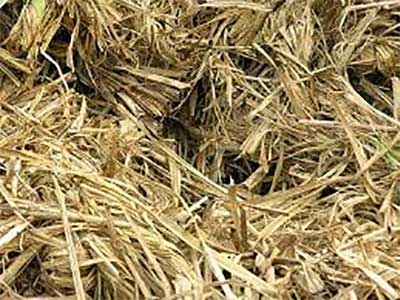GS-3: Science and Technology- developments and their applications and effects in everyday life.
Key words: Bagasse, lignin, fibers, pyrolysis, incineration, carbon tubes, pulps, lactic acid
Why in News:
Sugar mills produce mountains of bagasse, which are either used as cattle feed or burnt to generate electricity.
What is Bagasse?
- Sugarcane bagasse (SCB) is one of the world's most abundant agricultural residues. Bagasse is a by-product of sugar industry. It is the heterogeneous fibrous residue that remains after sugarcane stalks are crushed for sugar extraction. Typically, from processing 100 tons of sugarcane in a factory, 30–34 tons of bagasse is obtained.
What the Bagasse consists of ?
- Bagasse consists of fibers (48%), water (50%) and soluble solids such as
sugars (2%). Typically, dried bagasse is chemically made up of:
- 45-55% Cellulose
- 20-25% Hemicellulose
- 18-24% Lignin
- 1-4% Ash
- <1% Waxes
Uses of Bagasse:
- Bagasse is used as a more sustainable source of diverse paper products including toilet, tissue, corrugating medium, news print and writing paper. The use of sugarcane bagasse as a renewable raw material can be a sustainable option to reduce deforestation and impacts of the pulp and paper industry.
- Charcoal from sugarcane bagasse is another possible source of heating and cogeneration of energy, and can be produced according to the following simplified process. Bagasse is collected and passed through a pyrolysis step where it gets fully carbonized. The resulting powder is mixed with a binding material such as starch and then boiled with water so that it can be extruded to form briquettes or other desirable shapes of charcoal to be sold as a solid fuel.
- Sugarcane bagasse can also be used for products that improve the durability and mechanical properties of construction materials and can act as a binder. Lignin produced using sugarcane biomass was used as retarder additive for oil as well as cement slurry.
- The bagasse fibers can also be conditioned to be used in the textile industry, and as an effective adsorbent material to remove toxic metals and dyes from wastewater.
- Sugarcane bagasse has been used as a raw material to produce carbon quantum dots which can be used as biosensors in light-emitting diodes and even in drug delivery.
- Energy generation in sugar mills: Burning or incineration in a boiler for steam generation is the most common application of bagasse using a cogeneration system for steam and power generation. This allows supplying heat and power to the sugar and ethanol process and exporting any excess. In countries such as Brazil, where sugarcane industry is well developed, power generation has been largely supported by the government incentives and can be a major revenue component, after sugar and ethanol sales.
- Bioethanol production: Ethanol production currently uses saccharose as raw material, and that corresponds to using approximately one-third of the energy found in the sugarcane, Ethanol can be prepared by the fermentation of molasses which contain 60% of fermentable sugars.
- Lignin is being used in the boilers of power plants due to their high energy content typically, the higher heating values (HHVs) of biomass fuels were correlated with their lignin content.
- Utilization of sugarcane bagasse lignin-based product for pesticide formulations.
- Recent trends in the use of sugarcane bagasse include new and improved applications in the areas of materials. For example, the bagasse has been used as an excellent soil conditioner to improve sugarcane plant productivity and health.

What is Lactic Acid?
- Lactic acid, or lactate, is a chemical by-product of anaerobic respiration — the process by which cells produce energy without oxygen around. Bacteria produce it in yogurt and our guts. Lactic acid is also in our blood, where it's deposited by muscle and red blood cells.

How to Convert Bagasse to Lactic Acid?
- Bagasse is first pre-treated with sodium hydroxide and then hydrolysed with the help of hydrolytic enzymes. The dissolved fractions are then used as a starting material for bacterial fermentation to produce lactic acid.
- Excess calcium carbonate is added to the fermentation broth to reduce its acidity and extract lactic acid as calcium lactate, which is then purified to produce 99.9% lactic acid.
Uses of lactic acid:
- Lactic acid is commercially produced in large scale and used in several different industries including pharmaceutical, food, and textile industries. It is also used for the synthesis of lactic acid polymers that are recently being used as biodegradable plastics.
Way forward:
- It is estimated that over 75–90 million tonnes of bagasse are produced annually from 600 operational sugar mills in India. Through this source cheaper electricity can be produced and the greenhouse gases can be minimized in terms of the usage of biomass as fuel. Therefore, Bagasse, can play a major role in substituting fossil fuels for the future power generation.
Source: The Hindu BL
Prelims question
Q. The Bagasse can be used in which of the following areas:
- Healthcare sector
- Carbon nanotubes
- Electricity production
Choose the correct option:
a) 1,2 and 3only
b) 2,3 and 4 only
c) 1 and 2 only
d) All of these
Ans: D
Mains Question:
Q. Can sugarcane bagasse be a sustainable solution for energy security and climate change? Examine.







